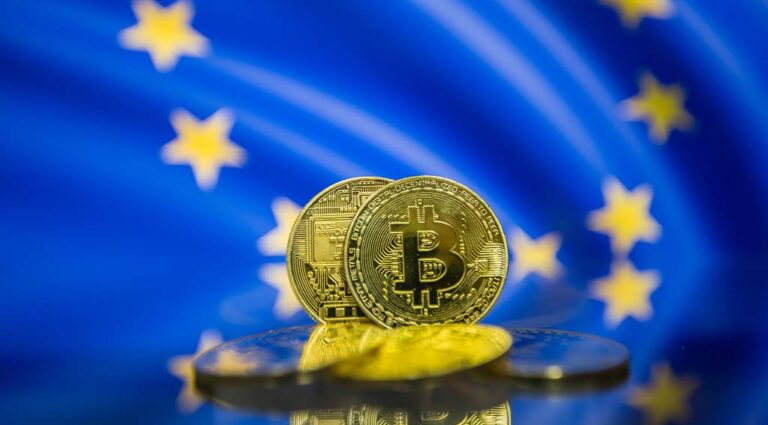The regulatory landscape for cryptocurrencies has undergone a significant transformation in 2024, with the European Union (EU) taking the lead through landmark initiatives such as the Markets in Crypto Assets (MiCA) Regulation, but also stablecoin guidelines as well as updates to the so-called “travel rule” for crypto transfers, a new report from Elliptic, a British blockchain analysis company, said.
These efforts represent some of the most significant crypto regulatory advances of the year, highlighting the EU’s pioneering role on the global stage and paving the way for regulatory trends in other regions.
MiCA: a revolutionary regulation
The report, published in September 2024, presents MiCA as a crucial step in the global regulation of cryptocurrencies. The regulation, which aims to harmonize crypto regulations across the EU, marks the first comprehensive framework introduced by a major global economy.
A major element of MiCA is the licensing requirement for crypto-asset service providers (CASPs), which requires them to adhere to strict standards of market conduct, consumer protection and prudence.
Once approved by a national supervisory authority in an EU member state, a CASP is allowed to expand its services across the bloc, creating significant business opportunities.
The deployment of MiCA is in progress in phases. The stablecoin provisions came into force on June 30, 2024, while the rest of the regulations will begin to apply on December 30, 2024.
Updates on the “travel rule”
Another key regulatory development in 2024 was the updates to its travel rule to cover crypto transfers.
The Travel Rule refers to regulations that require financial institutions to share information about the sender and recipient of financial transactions. It is designed to combat money laundering, terrorist financing and other illicit financial activities.
The new guidelines, published by the European Banking Authority (EBA) in July 2024, specify the information required to accompany every crypto transfer, regardless of the amount. They also outline steps to be taken by payment service providers and PSAPs to address missing or incomplete details, and establish measures to manage non-compliant transfers.
The update aims to ensure a consistent EU-wide approach to tracing transfers for anti-money laundering and counter-terrorist financing (AML/CTF) purposes, taking effect on 30 December 2024 and replacing previous guidelines.
Stablecoin rules
Finally, stablecoins, due to their growing importance in the crypto ecosystem, are subject to increased regulatory scrutiny.
Under MiCA, stablecoin issuers are required to obtain approval from the competent authorities of the Member States before offering their tokens within the EU, or when offering stablecoins linked to the Euro or another currency of a Member State.
They must maintain adequate reserves in a one-to-one ratio and partly in the form of deposits. They must also provide redemption rights to token holders at any time and free of charge, and must have a registered office in the EU.
Outside of the EU, other jurisdictions have also issued stable regulations over the past year. In Switzerland, the Financial Market Supervisory Authority published on July 26, new guidance, clarifying the obligations of stablecoin issuers.
The guidelines, which emphasize AML/CFT compliance and default safeguards, require issuers to determine whether their tokens qualify as deposits or investment programs and comply with banking licensing requirements, if applicable. applicable.
New challenges for industry players
While these regulatory developments bring greater clarity to businesses operating in the crypto space, they also introduce new compliance challenges for industry stakeholders.
Critics argue that MiCA could increase costs for providers and create significant burdens for startups and smaller players, thereby increasing barriers to entry and stifling innovation.
Compliance with the new standards may prove difficult for some businesses, as they involve costly licensing applications, adjustments to business operations to meet license requirements, including capital functions, anti-money laundering money and compliance, as well as ongoing monitoring and reporting obligations, KPMG. warns.
This dynamic should give large companies with substantial financial resources a competitive advantage, allowing them to acquire, at a discount, smaller crypto companies unable to comply with the new legislation.
Such consolidations are already underway. In July, British crypto trading platform Iconomi acquired Triaconta, a Dutch crypto investment platform to grow and expand in the Netherlands and the wider European market. In September, Kraken, one of the leading US crypto exchanges, completed its acquisition of BCM, one of the oldest and most renowned registered crypto brokers in the Netherlands.
Additionally, some companies are addressing these challenges by choosing jurisdictions with a less strict regulatory environment. For example, OKX, one of the largest crypto exchanges in the world by trading volume, selected Malta prefers France as its EU hub, citing “more lenient compliance”. Likewise, the Israeli broker eToro selected Cyprus as an EU hub where it obtained a CASP registration in September 2023.
The Elliptic report, titled Global Crypto Regulatory Landscape 2024, provides an update on regulatory progress related to cryptoassets. It highlights key trends and developments from 2024 so far, providing a detailed overview of global and regional developments in crypto regulation.
Featured image credit: image via free pik

